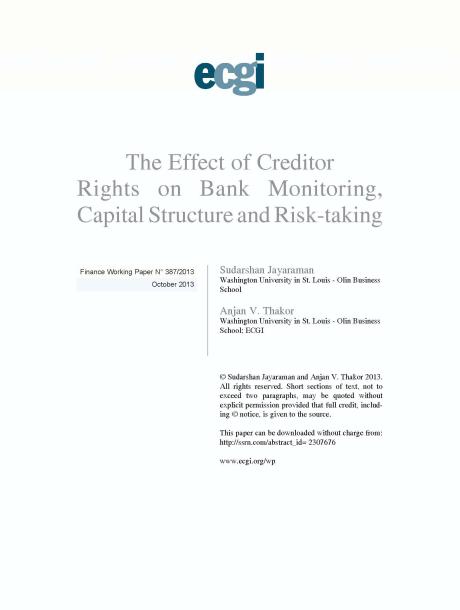
The Effect of Creditor Rights on Bank Monitoring, Capital Structure and Risk-taking
Abstract
We examine the multi-faceted effect of creditor rights on the way banks monitor, operate and finance themselves. We present a simple analytical model that shows that a strengthening of creditor rights reduces the need for banks to monitor their borrowers; and that banks, as a result, tilt their capital structures away from financing that provides the strongest monitoring incentives. To empirically examine whether this financing is deposits or equity, we use the staggered passage of legal reforms across countries as identifying variation in creditor rights, and find that banks tilt their capital structures away from equity and towards deposits when creditor rights become stronger. These results suggest that bank equity, rather than deposits, is the predominant form of monitoring-inducing financing. Next, we examine how creditor rights and the ensuing increase in bank leverage affect bank risk-taking. We find that increases in creditor rights increase bank risk-taking, but only in countries with government safety nets that encourage risk-shifting, not in countries without such incentives. We also find an increase in banks? cost of debt, but here too only in countries with government safety nets. These results indicate that lenders punish banks? higher risk-shifting propensities with higher costs of debt. Overall, our study sheds light on the complex role of country-level creditor rights on the way banks within the country function, and in doing so, contrasts the effect of creditor rights on banks from that on industrial firms.








